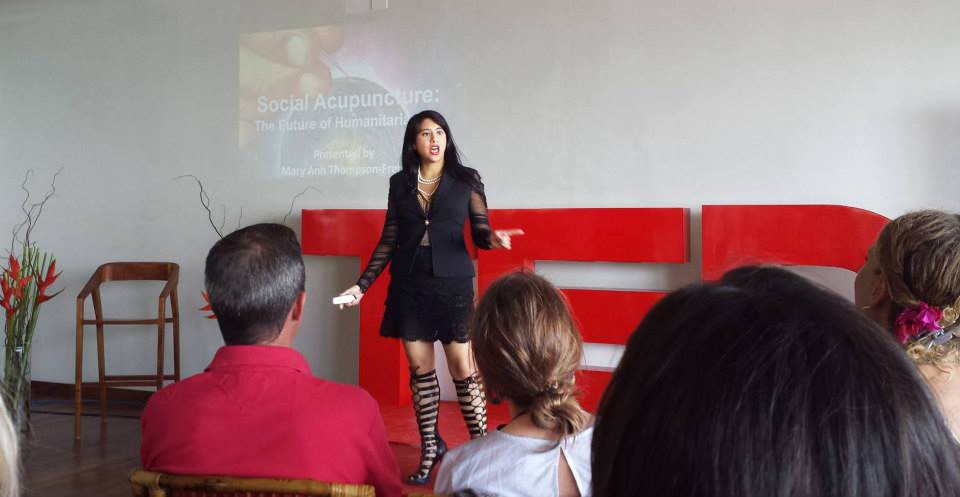When Russ Volkmann suggested that Mary Ann Thompson-Frenk, the co-founder/president of The Memnosyne Institute, be interviewed for ILR, it seemed easy enough. But then, that was before catching her on Facebook revealed that she and her husband, Joshua Raymond Frenk, President of The Club of Budapest Americas and VP of Memnosyne, are often in multiple locations within a few weeks’ time. However, the reasons why simply added to the mystery as to how a young woman has become close friends with some of the foremost minds in the Integral world, turning theory into a strategic humanitarianism which they and their organization call, “Social Acupuncture”.
Originally a term used “in house” among their Memnosyne staff, the couple has now made multiple presentations across the globe and often to communities who are being introduced to integral theory for the first time. Their Social Acupuncture methodology began before they met those they consider close mentors and friends, but they are quick to point out the influence people like Dr. Don Beck, Lawrence Bloom, Keith Critchlow and Dr. Ervin Laszlo have contributed to their projects and they now count those brilliant minds on Memnosyne’s Advisory Board. Kingsley Dennis and Dr. Ervin Laszlo even spotlighted the couple as two of the “21st Century Visionary Thinkers” leading innovative humanitarianism in their book “Dawn of The Akashic Age: New Consciousness, Quantum Resonance, and The Future of The World” wherein the couple contributed the chapter titled “Social Acupuncture: How Facilitating Integral Philanthropy is the Future of Impactful Humanitarianism.”
Groups such as the Cavendish Forum, NEXUS Youth Summit at the UN, and STEP Global Congress have also spotlighted their Social Acupuncture approach, even including a chapter by Mary Ann on the topic in their book on global economics titled “Developing A Global Agenda: Expert Insight from the inaugural STEP Global Congress”, while YPO’s Real Leaders Magazine recognized her as a “Real Young Leader to watch on the international scene”. That’s part of what makes their work exciting – the fact that it has successfully turned Integral Theory into active, almost always collaborative, working projects yielding real world solutions. Finally, able to nab the constantly on-the-go couple the day after Thanksgiving, we were able to pick Mary Ann’s brain between leftover turkey and pumpkin pie…
When did you first find yourself drawn to Integral ideas?
I suppose I trace that back to being a nosey child. My Dad would bring home stacks of paperwork to read and analyze and I was always curious about his “homework” because it was often filled with colorful graphs and such. But one day, when I was in the third grade, I came across a chart that listed countries from around the world in one column and various amounts of money in a second column. I asked my father what it was about, and he explained that the shareholders of his company, Southland Corp (7-Eleven), wanted to manufacture something. He said he had been told to pay no more than $7.50 a day, so he figured he’d just go down the list and select the country asking for that price. I looked at the list and saw that some countries were asking for only 15 cents. So, seeing things through the eyes of a 4th grade kid, I just asked, “Why don’t you choose one of these countries asking for only 15 cents, give them the approved $7.50 and change their life?”, then skipped off. My father just looked stunned for a moment, then came and knelt down so he could look me directly in the eyes and said, “Thank you for reminding me what my real job is on this earth.”
I forgot all about it until in high school he told me, “Remember that? Well, we did it, and you know what? They built better roads, schools, clinics and more and not a dime was charity. They earned every penny.” That experience really shocked me. I don’t recall what country it was, just know it was supposedly somewhere in South America. But that experience illustrated to me just how interrelated the world is. It also let me see how sometimes really powerful people, even those who, like my father, who are active humanitarians, might not understand how being fully conscious of their influence when making basic business decisions can become part of the solution. My father later came to my room and tossed Thomas Friedman’s book, “The Lexus and The Olive Tree” at me stating, “This should be required reading for every American high school student. This is the world you are inheriting.”
So, while we aren’t all CEO’s of major corporations, I recognize that every living person is influential to varying degrees, and our decisions create the culture of the world around us. Plus, with the internet, all of us alive today with access to it are the first generation of human beings to not have any excuse for ignorance. Ignorance has become an active choice that must be made. We will create the world cultures – their values, their motives, their ambitions, just by the choices we make. But if we are consciously aware of how we are creating those cultures by our choices every day, becoming what I like to call, “Conscious Cultural Creators”, we can create the world around us with conscious intent. While this understanding started when I was very little, via my exposure to globalization, discovering the works of Buckminster Fuller, Dr. Ervin Laszlo and later Dr. Don Beck, further underlined what I’d begun to suspect back in high school: that globalization isn’t the enemy. In fact, it is perfectly natural that our economic, ecological, sociological, and other systems would evolve to be shared at international levels and therefore become interdependent. But another thing also became clear – that if we do not approach this new reality by consciously taking responsibility for the impact of our decisions, our species will create a toxic situation for itself.
Your organization often talks about empowering people to become Conscious Cultural Creators to do just that in wherever their part of the world is. What made you believe such is possible?
This is going to sound so weird, but it’s the truth. I had a recurring dream since I was five years old of a place where there was a campus for humanity which had a building for science, a building for art, a building for spirituality, a building for health and medicine, etc, etc. I used to ask my father, “Why am I having this dream? Why isn’t it going to someone like you, who can make it happen?” He would just smile and tell me, “If I’ve made my living by spreading a concept around the world that benefitted my pocket, don’t you think you could do the same with a concept dedicated to helping people?” This dream continued into my twenties, and being a spiritual man, he then suggested I pray on it. We were in Mexico, at Casa Thompson, at the time, and that night, I had the dream again, only this time my father was in it as a little boy playing with a paper boat in a barrel of water. The next morning, my business partner knocked on the door and said, “You have got to see what I just visited! It’s called Xochicalco and it has a pyramid for science, one for art, one for health and medicine, one for spirituality, and more! And I don’t know why I’m telling you this, because it doesn’t matter, but there was this little boy playing with a paper boat in a barrel of water…”
This was just too much of a coincidence, so I demanded to go there, and sure enough, I stood there in disbelief as I learned how the Native Americans had created a place for the sole purpose of sharing knowledge for humanity’s sake. The technologies were unbelievable for their time, from hot and cold running water to their use of condensed light to diagnose broken bones, and the architectural styles from diverse cultures were combined on the ancient campus. I later learned many stories from members of tribes all over the Americas who told of how their ancestors would travel on foot to Xochicalco where they would stay for two or three years for the sole purpose of sharing knowledge that would then be shared for humanity’s sake. Supposedly they wore a butterfly symbol that let tribes they crossed paths with know where they were headed. It didn’t matter if the other tribe was at war with the traveler’s tribe, as it was understood that those who were headed to Xochicalco were doing so to benefit humanity. This means that our ancestors were consciously aware of creating the cultures around themselves, recognized how interrelated their areas of knowledge were, and even set aside warfare to collaborate for the benefit of everyone. Most importantly, according to Native Americans, it means that half the world – north, central and south America – has achieved this before. If they could do it without the benefit of today’s technology, why can’t we? Memnosyne incorporated a butterfly within our logo to remind us of this.
What does the Memnosyne Institute do?
The mission of the Memnosyne Institute is to help the diverse people of the world consciously encourage an evolution for themselves and for future generations by providing humanity with the means to encourage positive, peaceful global collaboration in seven main areas of knowledge. These are Interfaith Inquiry/Initiatives, Environment/Science/ Economics/Technology, Health/Medicine, Indigenous Cultures, Global & Local Outreach, Art and Spirituality.
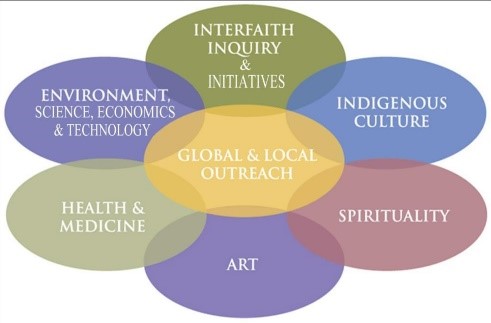
This is being achieved by ongoing global programs, (including international chapters in Kyoto Japan, Israel/Palestine, cultural center campuses/programs in Teotihuacan and the Yucatan and the newest, the School Out of A Box program to be launched in 2016) which we have provided locally, nationally and internationally in Africa Europe, Asia, New Zealand and North America and via a Virtual Campus (via GlobalCollaborationSource.org – designed thus far by Michael Gosney in collaboration with The Club of Budapest Americas) aimed at empowering leading humanitarians, be they thinkers, entrepreneurs, activists, investors, or philanthropists, to actively collaborate towards creating and implementing solutions serving humanity and the planet, and via the creation of The Memnosyne Campus For Humanity which will be built in Dallas, Texas, featuring among other things, two buildings designed by architect Keith Critchlow and Don Beck’s Vital Signs Monitor in the Center for Global and Local Outreach.
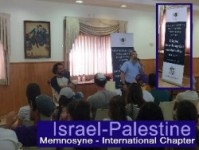
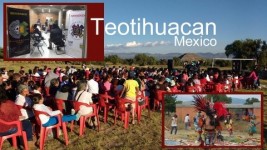
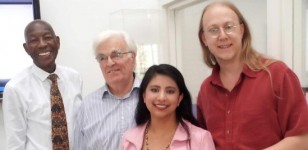 Every one of our programs begins with Social Acupuncture, a mapping out of influences on any one challenge, as it is only by mapping those things out that a sustainable solution can be identified.
Every one of our programs begins with Social Acupuncture, a mapping out of influences on any one challenge, as it is only by mapping those things out that a sustainable solution can be identified.
You’ve been published and speak quite frequently about what you and your organization call “Social Acupuncture”. Can you explain what you mean by that and how it works?
Sure, and better yet, I’ll share the physical exercise we use to help people understand Social Acupuncture better. When facing a crowd, I’ll take a ball of yarn and ask who in the room is focused mainly on the environment as their major passion. When hands go up, I toss the ball, ask people to grab a part and toss it across the room until everyone with their hands up is holding a piece of it. Then, I point out that exploring solutions for the environment can’t be successful without considering economics and ask who there cares most passionately about economics and do the same with those show of hands. Then, I explain, we can’t address economics without addressing human rights, and repeat the exercise. Eventually, this leads to whose human rights and suddenly you see women’s rights, LGBT, interfaith issues, issues of cultures, issues of race, etc and those issues lead towards the arts, interfaith, indigenous cultures, spirituality, health and medicine, etc. Once we’ve gone over the seven areas, every hand is holding onto a part of the yarn, many more than once. I’ll ask the audience to raise their hands and when they do a web is seen over their heads. I’ll ask who is surprised to be connected to an area of knowledge they never thought of as having any connection to their own concerns, and the hands up are almost always unanimous. When I explain the room represents a tiny sliver of humanity and ask if they agree that upon seeing this web, that it would be impossible to create a sustainable solution without mapping out the interconnections, the response has always been unanimous agreement.
Once this exercise is completed, it is much easier to provide people a diagram of their own spider web. We ask them to chart their means for accumulating wealth and means for making a positive impact in different colors. When they discover where these areas overlap, they become aware of where they have individual potential to make the greatest possible positive impact.
While many who are passionate about Integral thinking are, like myself, shameless nerds, it is important to remember the majority don’t have the patience for it these days and that we need to provide exercises like this to help them recognize interconnections and identify where they have the greatest potential. 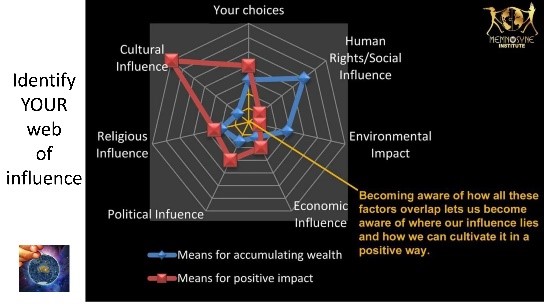 These webs can be as complex or as simple as one wants and provides a mirror for individuals or organizations to identify their influence. This is important because without taking the time to do this the impact of our resources of time and money can’t be stretched to its fullest. It is also important in this process for humanitarians to recall the difference between how the public versus the individual values an idea.
These webs can be as complex or as simple as one wants and provides a mirror for individuals or organizations to identify their influence. This is important because without taking the time to do this the impact of our resources of time and money can’t be stretched to its fullest. It is also important in this process for humanitarians to recall the difference between how the public versus the individual values an idea.
 The process we use is called the “Dart Board Measurement” which looks like a dart board with three circles. From inside out, it is personal, intellectual and tangible. This helps to remind us that the public recognizes value from the outside in while the ethics and motivation of the program is more often than not measured from the inside out. When a person has done these two things, one can create a business plan for strategizing between projects. For example, a humanitarian operating integrally can launch separate for-profit and non-profit initiatives, timing them so that they affect each other’s outcomes to maximize positive impact without compromising the
The process we use is called the “Dart Board Measurement” which looks like a dart board with three circles. From inside out, it is personal, intellectual and tangible. This helps to remind us that the public recognizes value from the outside in while the ethics and motivation of the program is more often than not measured from the inside out. When a person has done these two things, one can create a business plan for strategizing between projects. For example, a humanitarian operating integrally can launch separate for-profit and non-profit initiatives, timing them so that they affect each other’s outcomes to maximize positive impact without compromising the 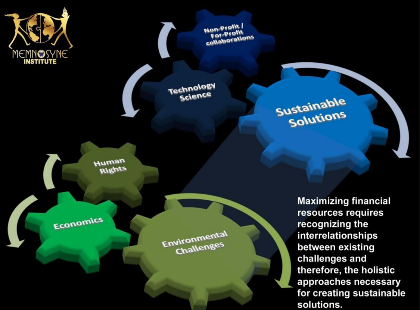 integrity of either. Or identifying a program located in a geographic region that provides a multiplier effect for an industry or international community. That level of strategy is social acupuncture because it identifies where resources can be allocated in ways that will multiply their reach and impact. In the past, humanitarians were operating like Jackson Pollock, hoping things would stick. But now, with access to all sorts of information, we can transform humanitarianism into an art, and soon, a social science thanks to Dr. Don Beck’s Vital Signs Monitor.
integrity of either. Or identifying a program located in a geographic region that provides a multiplier effect for an industry or international community. That level of strategy is social acupuncture because it identifies where resources can be allocated in ways that will multiply their reach and impact. In the past, humanitarians were operating like Jackson Pollock, hoping things would stick. But now, with access to all sorts of information, we can transform humanitarianism into an art, and soon, a social science thanks to Dr. Don Beck’s Vital Signs Monitor.
Please explain why Social Acupuncture is important and provide some examples of it in action.
Currently, I am excited about creating collaborations between for-profits and non-profits aimed at maximizing funds and avoiding reinventing the wheel. The urgency to pursue such hybrid strategies came about after seeing a presentation by Margot Brandenburg, the associate director of the Rockefeller Foundation, who explained, “The cost of repairing and addressing the world’s problems currently being faced far outsizes the combined budgets of philanthropy and governments to address.” This means the numbers they crunched revealed that only by harnessing the power held by private funds, either via individuals or via corporate, could the larger issues facing our species have a hope of being positively affected. In today’s world, for profits and non-profits will have to create collaborative strategies in which they don’t compromise their focuses, but wherein their focuses complement each other to achieve the goals of successfully addressing the challenges our species faces.
For millennials, we find it to be irresponsible to pitch humanitarianism against capitalism. One needn’t be in opposition to the other. There are plenty of examples where for-profit models can be major parts of the solutions badly needed. But only if they are run with strategies that take ethics into account. Don’t think I’m attacking conservatives in this, as I am very upfront with progressives who argue against capitalism altogether. Globalization and capitalism are tools that if harnessed strategically can improve our world. But as of now, too few are doing so. I am proud of my family’s legacy via 7-Eleven of demonstrating that it can be done via fighting to make profit sharing legal which increased employee loyalty and increased overall profit margins, launching the first telethons which provided marketing benefits surpassing traditional strategies, and know there are many others doing so as well. Entrepreneurs in their 20’s and 30’s want to find ways to focus on those types of modalities so that middle ground can be established that can actually DO something instead of reverting to either/or bickering. As leaders of a younger generation, we have that responsibility on our shoulders whether we want it or not.
One example of such a for-profit/non-profit hybrid project that our Memnosyne Institute team is overseeing is a collaboration called “School Out of A Box Project” between for-profits Green Habitat, Women That Soar Ltd., the non-profits The Club of Budapest International (COBI), NEXUS Mexico, Center for Human Emergence, The Carlos Slim Foundation’s Casa TelMex, Be Earth Foundation and led by The Memnosyne Institute, wherein we will be providing high quality high school and college education for those who would otherwise not have access to it. Through The Club of Budapest International, leaders such as Desmond Tutu, Jane Goodall, and others will take time to visit the students in the schools to encourage them as well as promote the project to their communities. Through Green Habitat, led by Tania Rodriguez, the architecture for the schools has been designed to be adaptable to multiple environments, enabling the program to be scalable while using eco-friendly methodologies. Though regional partners, like Saba Hamlet for Gender Equality, a Jordan focused and based non-profit, scholarships will be provided. Women That Soar has selected Memnosyne’s School Out of A Box program to be the charity of choice for their annual wards which will begin being aired nationally in 2016.
None of the things these for profits do would be achievable for a non-profit to attempt all by itself. But by designing a business model wherein there is value for the for-profits to participate via significant public relations and quantifiable marketing benefits, the for-profits are able to keep the integrity of their focus while empowering the non-profit, Memnosyne to do likewise. Being able to create win-wins for the for-profits and collaborating non-profit partners allows us to maximize the dollar for everyone involved, streamlining both to focus on what they do best, and thereby maximizing the number of people served. While the off-grid energy independent schools will be able to go to places where there is the greatest need. We are currently exploring the prospect of bringing the program further into Mexico, Haiti, South Africa, Canada and Romania due to their leaderships’ requests for help in addressing great educational needs and have received inquiries from Native American reservations in the USA, First Nations communities in Canada and in the USA’s Appalachian mountains.
Similar collaborative models we are doing include FoodSourceDFW.org that facilitates collaborations between for-profit food providers, such as restaurants, caterers, large sports stadiums and grocers to donate surplus to food pantries and homeless shelters within 24 hours, thereby streamlining the connections that previously resulted in 30% of food spoiling in the DFW area. Such a solution would not have been possible without for-profit and non-profit collaboration. Lastly, I’m especially excited about empowering others, like ILR’s readers, to create far-reaching collaborations of your own via GlobalCollaborationSource.org aimed at empowering leading humanitarians, be they thinkers, entrepreneurs, activists, investors, or philanthropists, to actively collaborate towards creating and implementing solutions serving humanity and the planet. While it began as an initiative shared between The Memnosyne Institute and The Club of Budapest, we’ve recently become aware of similarly focused work Juan Carlos Kaiten is doing in Monterey and are exploring areas of potential collaboration.
How has integral thinking affected your work?
In middle school and high school and even in college, it seemed like all teachers wanted to place areas of knowledge in silos. But for most of us growing in the first eras of globalization and the internet, our minds were accustomed to look for interconnections. This left the traditional approaches towards comprehending the world around us feeling outdated. Discovering the works of Buckminster Fuller, Dr. Ervin Laszlo, Thomas Friedman and Dr. Don Beck felt like a breath of fresh air. They and Don’s mentor, Dr. Clare Graves, really understood not only our species potential for good and bad, but also have developed maps, systems and process for identifying sociological trends, diagnosing scenarios and strategizing what routes should be taken. In essence, they provided the vocabulary to express the ever increasingly interconnected reality we are living in.
Who are some people who’ve had an influence on your work?
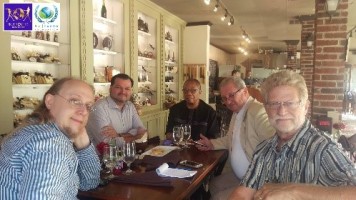
Joshua Raymond Frenk, Sulaiman Hemani, Chief Kalu; Lawrence Bloom and Coke Buchanan
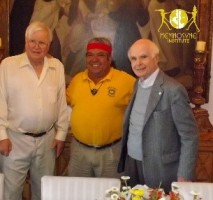
Dr. Don Beck, Ricardo Cervantes Cervantes and Dr. Ervin Laszlo;
Besides my father, John Philp Thompson, Don Edward Beck, Ricardo “Tlahuizcalpantecutli” Cervantes Cervantes, Ervin Laszlo, Keith Critchlow and Lawrence Bloom have all played major roles in influencing both Joshua and me in our work.
How did your father influence your work?
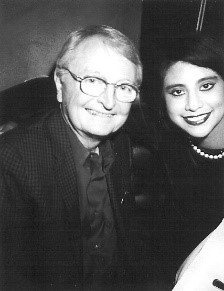
John Philp Thompson, Sr. and Mary Ann
Aside from introducing me to globalization and conscious capitalism (he and his father helped fight to make profit-sharing legal), he also taught me a great deal about leadership being about being in service to the community you lead, ethics. He used to say “Integrity is only integrity if you stick to it when it’s inconvenient!” He also was one of the most focused people I’ve ever known, demonstrating how how scalable solutions are possible. Without his influence in my life, I don’t think I would have dared dream that half the things Memnosyne has achieved would have been possible!
How did Ricardo Cervantes Cervantes influence your work?
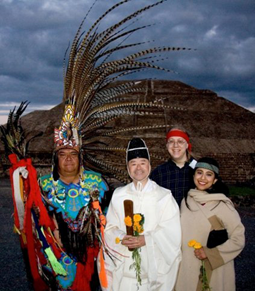
Ricardo Cervantes Cervantes, Rev. Tanaka, Joshua Raymond Frenk and Mary Ann
Ricardo has been a spiritual teacher of mine since I was 15. I’m now 38 and still learning from him each time we meet. One of the best things he’s shared with me are what he calls the “Seven Arrowheads of Medicine” which are Origin (know where you come from) + Creation (make a contribution to the world) + Education + Humility + Honesty +Love = Liberty. The idea is that it is in embodying the six that one achieves full liberty of spirit.
Please tell us about how Ervin Laszlo has affected your work?
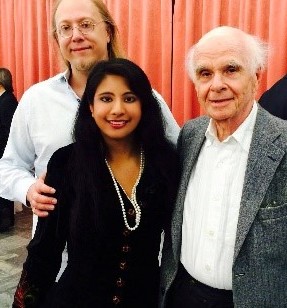
Joshua, Mary Ann and Ervin
Ervin is able to look at the statistics regarding our planet’s and species’ well-being with an accurate, objective eye, and still believe we have the potential to usher in a new renaissance of consciousness capable of growing beyond individual wants, ignorance and instead enter into a world of global collaboration. You can’t say he’s an idealist, as he acknowledges all the challenges we face. But unlike many his age who are just ready to let younger generations deal with challenges on their own, or to limit their focus on philosophy, he instead encourages new leaders to emerge with new solutions, using his influence to bring the ideas he champions to the forefront of conversation. We first met him at Michele Saloff-Coste’s Design Me A Planet conference in Austria. I was nervous presenting our work in front of him, but he told us to keep it up, commending us for moving theory into proven practice, and later requested Joshua to head up Club of Budapest Americas, making it the only COB chapter to hang under the 501c3 umbrella of another organization. He supported our argument for expanding the mission of the chapter to include economics and he continues to directly participate as a Advisory Board Member and good friend. We were so inspired by his work that we made certain he was spotlighted in the video, “Empowering A Generation”, directed by Joshua and aimed at introducing integral approaches to the millennial generation, and we will be offering the Club of Budapest an office in the Memnosyne Center for Global and Local Outreach.
Please tell us about how Don Beck has affected your work?
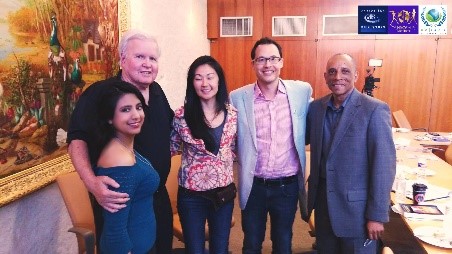
Mary Ann, Don Beck, Sofia and David Chang, Orland Bishop
Don Beck’s work has helped provide a vocabulary for our team to communicate a wide diversity of sociological situations in regions around the globe. He is currently designing a course titled, “An Introduction to Globalization” that will introduce spiral dynamics via our School Out of A Box program and he’s presented to our extended team, including those from Japan, Mexico, London, different Native American tribes, and more, as well as being featured in the “Empowering A Generation” video. But perhaps the most exciting thing is the development of the Vital Signs Monitor.
Can you please tell us about the Vital Signs Monitor?
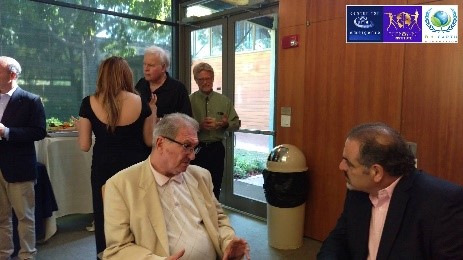
Lawrence Bloom and Said E. Dawlabani
The Memnosyne Campus for Humanity’s Center for Global and Local Outreach won’t just be about outreach programs, but rather also about improving the art and science of humanitarian outreach around the globe. Those who gathered in Dallas in early October of 2015 at the Dallas Arboretum explored how and why the Vital Signs Monitor is important. Their excitement over how the VSM could be used mirrored the same levels of interest as we had seen at the White House, Temenos Society and at the Club of Budapest’s anniversary. We are deeply grateful to both Don Edward Beck’s Centers for Human Emergence and to Lawrence Bloom’s Be Earth Foundation who we hope to collaborate with in the near future to bring this vision into reality for Dallas, the Ukraine and many other parts of the world. We also plan to work with ARS Electronica to put the VSM into holographic form based on intuitive design so that people visiting the center can view the changes the VSM makes in real time and observe how changes in demographics, environment, etc affect the whole.
In addition, we plan to work with Don’s Centers For Human Emergence to develop programs that will train people on how to use the VSM, as well as provide Don his own space to analyze, perfect and provide the kind of insights on honing the VSM that only he can.
Please tell us about how Keith Critchlow has affected your work?
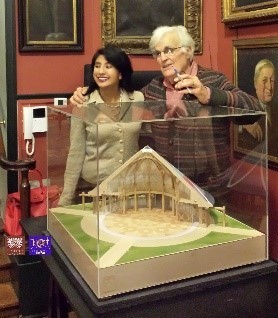
Keith Critchlow & Mary Ann
My whole life, I’ve seen pattern repeated throughout nature, throughout human interaction, throughout diverse spiritual practices and more. When things feel in harmony with their surroundings, there is an elegance to how patterns fit within patterns. I’ve recognized that elegance from sculpting geodesics to Nassim Haramein’s quantum physics to the metaphysical practices from around the globe to Don’s Spiral Dynamics to the biological surroundings which reveal our shared human consciousness follows the same patterns, etc. These things make me think of Keith Critchlow’s observation that “Mankind confirms his own grounds for being by his capability of conceiving this archetypal pattern, and sustains his world by re-creating it in that world.”
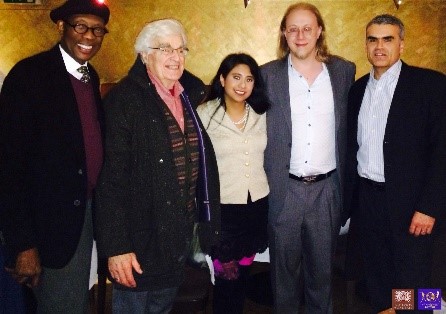
Phillip Collins (Executive Director), Keith Critchlow, Mary Ann, Joshua Frenk and Matthew Critchlow
We wanted our Campus for Humanity’s Center for Global and Local Outreach to be an educational outreach in itself. There will be permanent exhibitions of how different parts of our world share the same patterns from the quantum to the microscopic to the biological to the centerpiece, the VSM. Considering what our goal is, it made perfect sense to engage Keith Critchlow to design the building. When we first arrived at his office, he placed his hand on a stack of 24inches of paper on a table and told us, “I’ve been waiting for an organization like you to design a building with the sacred geometry for the new age.” He wound up not only designing the Center for Outreach for our campus, but also the Center for Spirituality as well and his work is remarkable. Working with him has been a pleasure, and education sprinkled with unexpected revelations.
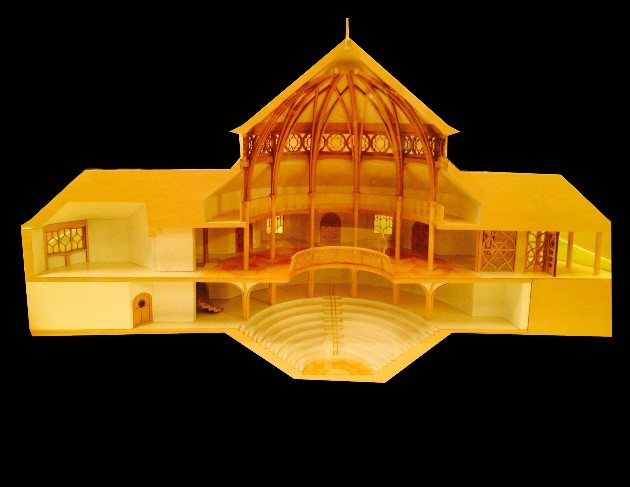
On a personal aside, I am deeply touched that he snail mails insights about life and recommended approaches to today’s issues. He was also generous in inviting us to make a presentation in front of The Temenos Academy of Integral Studies. Although I will not soon forget it as right before I spoke, he asked me to look around the room and tell him what I didn’t see. I told him I didn’t see women’s names on the wall or portraits of women. He laughed and told me, “Exactly. Those are the names of those who have lectured in this room. Now you know another reason for why you better do a good job tonight!”
Please tell us about how Lawrence Bloom has affected your work?
Lawrence is one of our newest Advisory Board members and brings a strong emphasis on applying Integral insights to for-profit modalities so that they can play an impactful role in affecting the issues he has come to care about. His mind is capable of moving from the financial to the sociological to the metaphysical to the environmental and more, often holding all the information for a full mental image. He has become a strong advocate for our Vital Signs Monitor, School Out of A Box, Campus for Humanity and more. We were also deeply grateful for his collaboration at the first ever Humanitarian Innovation Forum, co-hosted by fellow board member, Kunal Sood, and Lawrence’s Be Earth Foundation at the United Nations this past year.
Who in your generation, do you consider people should watch in the years ahead?
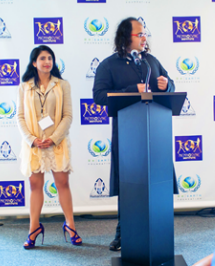
Mary Ann & Kunal Sood
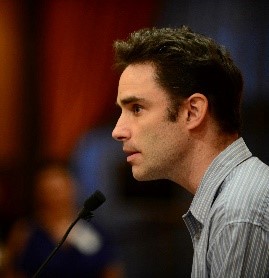
Jonah Wittkamper
Some of the leading minds who are already applying Integral thinking to their strategies and modalities include Kunal Sood of NOVUS, TED, and a fellow Memnosyne Board Member, Jonah Wittkamper of NEXUS Youth Summit, Memnosyne board member and fellow NEXUS member, Gray Keller, Ruma Bose – author of Mother Teresa CEO/NEXUS member, Tania Rodriguez, a fellow Memnosyne Board Member, NEXUS member and head of Club of Budapest Mexico, and Juan Carlos Kaiten, Memnosyne’s newest Advisory Board Member. Each of these individuals has an innate understanding of recognizing and strategizing for existing interconnections when attempting to create a solution.

Gray Keller, Tania Rodriguez
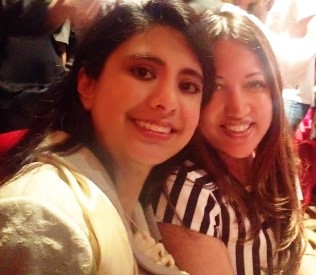
Mary Ann & Ruma Bose
In terms of the wider public arena, I’m a big fan of the band MUSE who puts many Integral concepts into their music. For any older generations who want to better understand the mentality of the millennial generation, I strongly recommend viewing their video “Unsustainable” which depicts young adults hitting the ground running through a forest as a woman gives off statistics regarding the challenges in the world they have inherited and warns that current practices are unsustainable. Another video that captures the millennial mindset is the Kongo’s “Come With Me Now” which articulates a desire to aspire to a higher quality of life as opposed to feeling bogged down in the quest for quantity. I think the popularity of these two songs is a symptom of this new generation’s growing consciousness and it gives me hope.
What has been one of the most surreal moments for you in recent time?
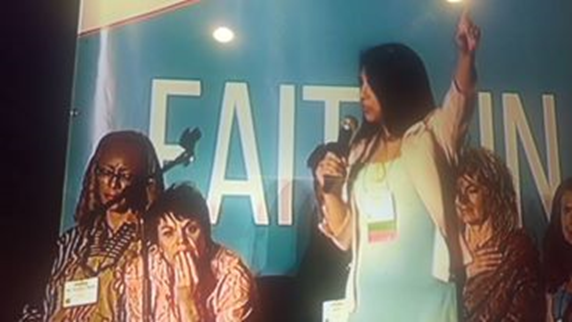
Mary Ann addressing crowd of 3,000

Mary Ann and Marianne Williamson
I was shocked to be considered a spiritual leader at the most recent Parliament of World’s Religions and even more shocked to be invited to address a crowd of 3,000 people. But it was fun inspiring them to reach for their dreams!
Please tell us about The Memnosyne Campus for Humanity?
Our hope is that the campus provides a place where people can share their knowledge for the benefit of humanity. We have it in our bylaws that all knowledge shared with our organization is for humanity and that we cannot profit from it. We have been told by scientists, doctors and others that currently there is no place where they can serve information without their associated organizations laying claim to the information shared. We believe that for humanity to progress there have to be places where people can share without fear of others laying claim to their work. With this in mind, each of the seven centers will not just have office space for us, but also for organizations whose vision embrace active collaborations benefitting humanity and the planet. Most importantly, our goal is to create the tools that will enable future generations to take things even further.
The campus, designed by one of Texas’ leading green architects, Graham Greene, itself is designed to be a garden so that local communities benefit from a gift of a greenspace they might otherwise not have, and services, such as the Center for Spirituality wherein people work with a guide to help themselves identify their passions and connect them with what is going on the campus that might resonate with them. We also have many inventors, spiritual leaders and others who have made promises of the appropriate centers being given their life’s writings so their ideas can be made easily accessible for generations to come. Having also worked with many indigenous communities, we have also been promised quite a few genuine cultural based structures, from a Maori Longhouse, to a Tolteca Temazcal to more. The result will be a campus that reflects the wide diversity of human life.
Where do you see your work going in the future?

Sulaiman A Hemani, Lawrence Bloom, Anthony Chisom, Phillip E. Collins, Rev. Dr. Todd Collier
I see it continuing to become a means to empower individuals, organizations and communities around the world to become the leaders their communities need. When you break any of the challenges we face down, it all comes back to a crisis of consciousness and I don’t mean in some new agey way either. I mean that without the perspective that hones in on the existing and impending interconnections between all the aspects of our lives, we won’t be able to sustain the quality of life we want on our planet.
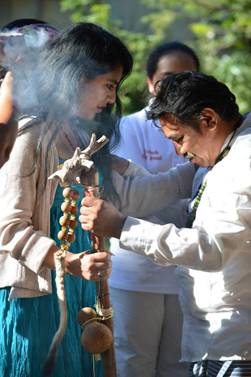
Mary Ann & Mayan Elder
There are many people with the leadership potential out there, in small villages, or lost among huge metropolises. Without the tools to identify them, encourage them, and to connect them, humanity will lose out on possible solutions and a great deal of inspiration. But by designing our three tiered approach – our campus without walls (local and global programs), our Virtual Campus and our Campus for Humanity, we hope to take advantage of the insights of our Elders and the innovations of everyone so that we can remake the kind of synergy that once existed at Xochicalco so long ago. Our world needs that kind of vision more than ever, and we have to move our mindset from competition to collaboration if we are going to create the future that holds the greatest potential for all of us. Programs like our School Out of A Box aimed at making high school and university education accessible to the poorest regions of the world, our cultural center programs that empower communities to unify and sustain their unique ancestral knowledge while still recognizing our common humanity shared with people from all corners of the globe, our Memnosyne International Chapters empower regional communities to take leading roles in innovation, and programs like GreenSourceDFW.org and FoodSourceDFW.org continue to help people discover greater strength comes in collaboration. In the future, I hope to see many of these programs scaled to spanning across the world and many more like them developing out of different parts of the world.
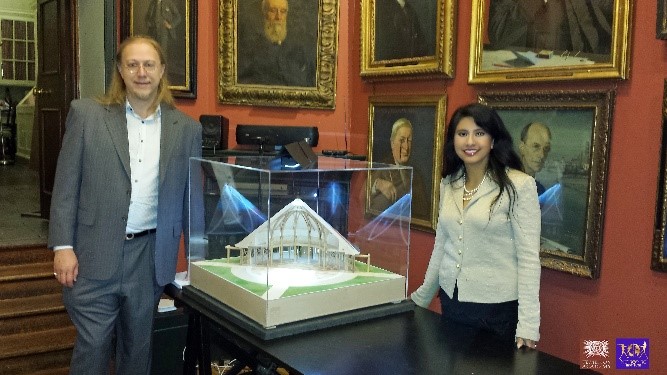
Joshua & Mary Ann
In short, I hope to see Memnosyne succeed in empowering people to become conscious cultural creators, capable of consciously creating the world around them that they want. Considering we face some huge challenges, this can seem daunting. But no generation of humanity has ever had the kind of resources we now share, so it is the ultimate test: will we develop the sociological “software” to balance our technological “hardware”? If we pass this test, this time will be looked back as the era that made the greatest difference. Those of us alive today have the choice to step up to the plate and move Integral from the sole claim of intellectuals and into the consciousness of everyday people. Their pragmatism will provide a crucial ingredient in the alchemy that makes solutions come to life!
About the Author
Described by Chicago’s WomanMade Gallery, where she serves on the Advisory Board, as “a prolific artist, writer and social activist!”, Mary Ann Thompson-Frenk has been a guest speaker on issues of religious tolerance, healing between divided cultures and religions, and embracing a globalized world community responsibly for Heifer International in Rwanda, The Foundation for Pluralism, The World Muslim Congress For Peace, The Dallas Green Alliance and will be a featured speaker in Malaysia for the benefit of 300 Muslim women searching to discover ways to create peace in the Middle East while protecting their cultural heritage. Mary Ann has led mediation efforts via the Memnosyne Foundation for the Hopi&NavajoAlliance (HANA) which resulted in the first alliance between them in 300 yrs; the Toltec & Maya for the first indigenous medicine exchange in 500yrs & in a supportive role w/The Advocates For Human Rights w/The Liberian Truth and Reconciliation Commission. She was selected out of 500 artists from the US,UK,Canada & Mexico to receive ARTV’s Award for “Best in Sculpture” during its Premier on BRAVO; is recognized by the Buckminster Fuller Institute as being the first artist to adapt the geodesic dome’s architectural formula at inverted angles to create the human figure; & her work has been commissioned to be part of a traveling exhibition curated by designer Cristina Pineda that will exhibit in museums in Mexico, USA & Europe & will be included in Switzerland’s exclusive Art Basel 2009Exhibition. Her work has been covered in both television & print media. She has also been recognized for her international philanthropic/activist efforts by Philanthropy World Magazine & by international publications such as KENA Magazine’s “Un Gran Ejemplo” and El Sol De Mexico’s “Una Historia Diferente”. She has been selected out of the State of Texas to receive the 2008 Women That Soar’s Brilliantly You Award for her Philanthropic/Humanitarian/Activist work around the world.

